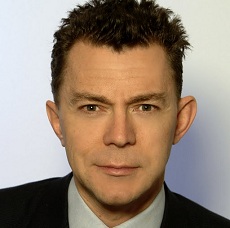Learn more about what industry analysts are saying on the talent management landscape and how SuccessFactors can help companies address their capability gaps with the latest in HR technology.

Who is Thomas Otter?
Before joining SuccessFactors, Thomas Otter was an analyst with Gartner and had over 21 years experience in the IT industry. He spent five years at Gartner, most recently as VP HCM trends and technologies, and was Gartner’s lead analyst on SAP – parent company of SuccessFactors – from 2009 to 2011.
1. You said one of the driving forces behind your move to SuccessFactors was joining a company that redefines how HR systems deliver value to customers. Can you expand on what modern systems must do to drive true value for HR departments?
Modern HR systems need to do many of the things that HR systems have always done, it is easy to forget that. While it sounds trite, HR systems have to do some fundamental basic things like track who works in the organisation, pay people, work out overtime, and calculate leave. These things aren’t as easy as some folks make out. What works in Kansas doesn’t work in Kampala.
But that isn’t enough, the modern HR system needs to do more. Make managers manage better, drive employee engagement, provide HR with insights, and most importantly, make the business run better. The HR department is not the only customer of the HR system. Good people data makes the business run better.
Modern HR systems need to manage complexity. HR isn’t simple, so let’s not kid ourselves that we can wish away the complexity. But technology needs to shield the user from the complexity. Think menu, not recipe.
Today’s HR systems must also help obliterate administrative process cost. An engaging self service experience combined with robust administrative functionality lowers the cost of HR. HR must not forget that it has a service function.
Modern HR systems must be flexible. As organisations change rapidly, so too should the HR system. Rapid innovation, in the case of SuccessFactors, every 13 weeks, means that we have roadmap flexibility to adapt to customer demands, and to create innovation. Customers must be able to extend and adapt the technology without requiring massive projects, or bespoke modification.
The user is also key – modern systems must go where the users are located. The days of being chained to the desktop are over. Consumer applications have shown us how to make applications delightful. Enterprise apps still have a way to go.
2. You covered HCM trends and technology at Gartner. What would you say were the three biggest stand-out lessons you learnt about HCM and the HR function?
Not enough HR people get the power of analytics. Either they ignore it, or hype it beyond what it is. The HR function sorely needs a measured approach to workforce analytics. Analytics can’t do stuff, but it can point you to where stuff needs to be done.
Global HR is hard. It takes a massive effort to make a global system locally relevant. Many organisations force US practices onto distant subsidiaries and wonder why global systems become out-of-date global rolodexes.
The best HR departments know the value of HR information for the whole business, and make it their goal to empower other processes with rich and accurate people information. These organisations also engage with employees and managers to give them what they really need, not just what HR thinks they need.
3. What mistakes do companies make when selecting enterprise HR technology?
- Don’t dig deep enough on global and localisation.
- Fail to align with the rest of the organisation, including IT.
- Companies play what I like to call “Buzzword bingo” and listen too much to buzzwords that are included in the pitch.
4. What are the key HR technology trends for 2014 that companies need to be aware of?
- Compliance is not going away. Legal changes such as eSocial in Brazil, RTI in the UK, and imminent changes in EU privacy regulations will keep HR departments busy.
- Social software has already revolutionised recruitment, and it will hit other part of HR in 2014. We are only just beginning to understand the power of analytics, and the reach that mobile brings.
- Think beyond employees, and think total workforce. Contingent workforce is an opportunity and a threat.
- Mobile goes mainstream.
5. I liked your blog post on vendors not forgetting the good ideas that can come from their own engineers in the ‘rush to be customer-centric.’ Where else do good ideas come from when it comes to HCM technology innovation and what does innovation look like in HR technology?
Some of the ideas come from customers, some from partners and analysts, some from product managers and engineers. Remaining open to ideas from outside keeps you fresh. ‘Not invented here’ is not an option today. Acquisitions, when done well, help. The beauty of SaaS is that you learn more from how the application is used than was ever possible in the past.
6. What will the vendor landscape look like in five years?
Cloud will be the dominant delivery model. Talent management will largely merge into core HRMS; but expect to see continued innovation from big and small vendors. HR will continue to be a hot bed of technology innovation, be it in cloud computing, mobile, analytics or social computing. There will be more consolidation, but I expect there will be some new names on the scene too. Content, not just the application, will be important. How HR integrates into the business will become more important than ever before.
For more information on why Thomas’ chose to join SuccessFactors an SAP Company, take a look at this video.






